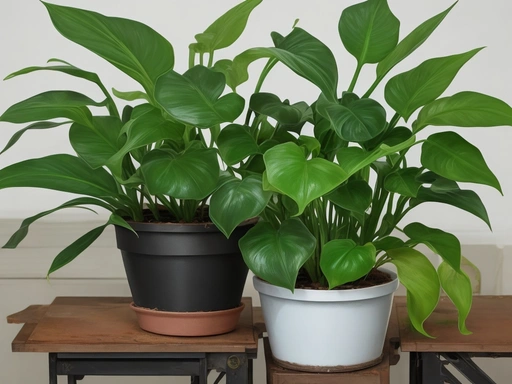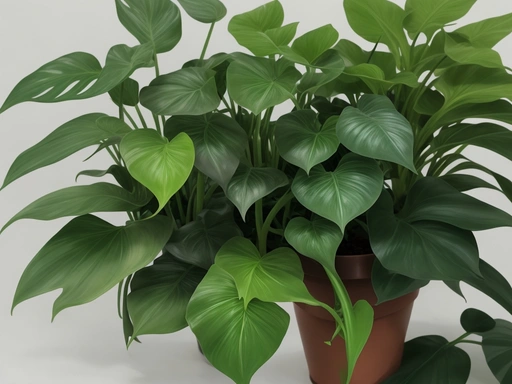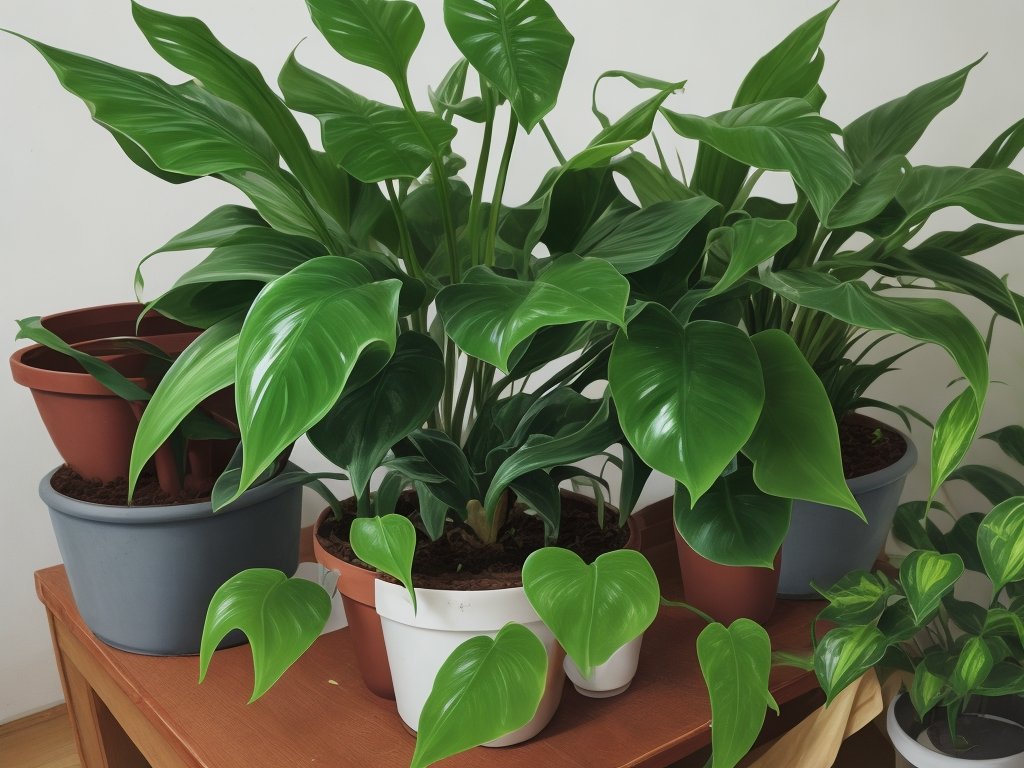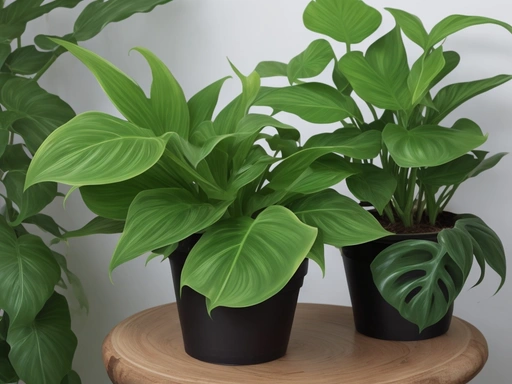Philodendron Pruning Tips for Healthy Growth – Try it Out!
Key Takeaways:
- Regular pruning promotes healthier growth and fuller foliage in Philodendron plants.
- Remove dead or yellowing leaves to improve the overall appearance of your Philodendron.
- Prune longer stems to control the size and shape of your Philodendron.
- Clean and sterilize your pruning tools to prevent the spread of diseases in your Philodendron.
Are your Philodendron plants looking a bit unruly?
Worried they might be missing out on some much-needed TLC?
Well, you’re in luck, because today I’m going to share with you some expert tips on how to prune your beloved Philodendron plants.
Pruning is an essential practice that can not only enhance the overall appearance of your plants but also promote healthy growth and prevent disease.
By removing dead leaves, cutting back leggy stems, and encouraging bushiness, you’ll be amazed at the transformation your Philodendron can undergo.
So grab your pruning shears and get ready to give your plants the love and attention they deserve!
| Pruning Tips |
|---|
| 1. Remove dead or yellow leaves: Regularly inspect your philodendron plant to identify any dead or yellow leaves. Use clean, sharp pruning shears or scissors to carefully remove these leaves at their base, without causing damage to the healthy part of the plant. |
| 2. Trim leggy vines: If your philodendron’s vines are becoming too long and leggy, you may want to trim them back. Identify the point where you would like to make the cut, ideally just above a node (the point where leaves or buds emerge). Make a clean cut using pruning shears or scissors. |
| 3. Control plant size: Philodendrons can grow quite large, so if you want to keep your plant compact and manageable, pruning is essential. Cut back any excessively long vines and trim the plant as needed to maintain the desired size and shape. |
| 4. Promote bushier growth: If your philodendron is prone to becoming sparse or leggy, you can encourage bushier growth by regularly pinching or pruning the tips of the vines. This will stimulate new growth and result in a fuller, more compact plant. |
| 5. Sterilize pruning tools: Before and after pruning your philodendron, it is important to sterilize your pruning tools to prevent the spread of diseases or pests. You can use rubbing alcohol or a diluted bleach solution to disinfect the tools. |
Why Pruning is Important for Philodendron Plants
Pruning is important for Philodendron plants to promote health, encourage growth, and maintain their desired shape and size.
Benefits of Pruning Philodendron Plants
Pruning Philodendron plants has several benefits. It promotes growth and bushiness, prevents overgrowth and legginess, encourages air circulation, and reduces the risk of disease and pests.
Pruning helps your Philodendron plants stay healthy and thrive.

When to Prune Philodendron Plants
Prune your Philodendron plants when you notice signs of overgrowth or damage.
Signs that Your Philodendron Needs Pruning
Here are some signs that your Philodendron might need pruning:
- Long and sparse stems: If your plant has long, leggy stems with few leaves, it may benefit from pruning to encourage bushier growth.
- Yellowing or droopy leaves: Yellowing or droopy leaves can indicate that your plant is not getting enough sunlight. Pruning can help remove shaded or damaged leaves, allowing for healthier growth.
- Overcrowded or crossing branches: If your Philodendron has branches that are overcrowded or crossing over each other, pruning can help create more space and improve air circulation, reducing the risk of disease and pests.
Best Time to Prune Philodendron Plants
The best time to prune philodendron plants is after the growing season or when the plant is dormant.
This is usually during the spring or early summer months.
Pruning during this time allows the plant to recover and grow new foliage before the next growing season.
It is important to avoid pruning during winter, as the cold temperatures and low light levels can stress the plant.
Pruning Frequency for Philodendron Plants
Pruning frequency for Philodendron plants depends on the maintenance and shaping goals you have for your plant. Regular pruning to remove dead or damaged leaves can be done as needed.
Shaping and training pruning can be done every 1-2 years, preferably during spring or summer.
Just make sure not to prune too much at once to avoid stressing the plant.
Tools and Techniques for Pruning Philodendron Plants
To properly prune your Philodendron plants, you’ll need a few essential tools and a basic understanding of the techniques involved.
Essential Pruning Tools for Philodendron Plants
I want to share with you the essential pruning tools for Philodendron plants. These tools will make your pruning process effective and efficient.
Here they are:
1. Pruning Shears: These are the go-to tool for pruning. They have sharp blades that can easily cut through stems and branches of your Philodendron plant.
2. Snips or Pruning Scissors: These smaller tools are great for precision pruning. Use them to snip off dead leaves, thin stems, or make precise cuts.
3. Sterilizing Solution or Rubbing Alcohol: It’s important to sterilize your pruning tools before and after each use. This helps prevent the spread of diseases or infections to your Philodendron plant.
Having these essential pruning tools will make it easier for you to maintain the health and appearance of your Philodendron plant.
Pruning Techniques for Philodendron Plants
To prune your Philodendron plants, you can follow these techniques:
- Snip off dead or damaged leaves to maintain plant health.
- Remove overgrown or leggy stems to encourage bushiness.
- Cut back excessive growth to manage the size of the plant.
Remember to use sterilized pruning tools and monitor the plant for any adverse reactions after pruning.

Step-by-Step Guide to Prune Philodendron Plants
Get ready to learn a step-by-step guide to prune your Philodendron plants.
Step 1: Identify the Areas for Pruning
Step 1: Identify the Areas for Pruning
- Check the overall condition of the plant.
- Look for dead, damaged, or diseased leaves.
- Identify any long or leggy stems that need trimming.
- Spot overcrowded or crossing branches that should be pruned.
- Take note of yellowing or droopy leaves that may require removal.
Step 2: Prepare the Pruning Tools
To prepare the pruning tools for your philodendron plants, start by selecting the right tools such as pruning shears, snips or pruning scissors. It’s important to choose tools that are sharp and clean.
Before using them, make sure to sterilize the tools with a sterilizing solution or rubbing alcohol.
This helps prevent the spread of infections and diseases to your plants. Sharpening the tools beforehand can also make the pruning process easier and more effective.
Step 3: Pruning the Philodendron
To prune your Philodendron, start by snipping off any dead or yellowing leaves. This will help maintain the plant’s overall health and appearance.
Next, cut back long stems to encourage bushiness and promote new growth.
Be sure to use proper pruning tools and sterilize them to prevent infections.

Step 4: Care After Pruning
After pruning your Philodendron plant, it’s crucial to provide proper care to ensure its recovery and continued growth.
Maintain appropriate light, water, and humidity levels for the plant.
Monitor the plant for any adverse reactions or signs of stress.
Pay close attention and make adjustments as needed to promote its overall health.

Common Pruning Mistakes to Avoid for Philodendron Plants
Avoid these common pruning mistakes for your Philodendron plants.
Mistake 1: Pruning Too Much at Once
Pruning Too Much at Once can harm your Philodendron plant. Instead of cutting off a large portion of the plant, opt for gradual pruning over time.
It allows the plant to adjust and minimize stress.
Start with small cuts and observe how the plant responds before proceeding further.
Mistake 2: Pruning at the Wrong Time
Mistake 2: Pruning at the Wrong Time.
Pruning your Philodendron at the wrong time can be detrimental to its health and growth.
It’s important to know when to prune to ensure the best results.
If you prune your Philodendron at the wrong time:
- It may not recover properly and could experience stunted growth.
- It may lose too many leaves and struggle to regain its vitality.
- It may be more susceptible to disease and pests.
To avoid this mistake, remember:
- Prune your Philodendron during the growing season or when it is dormant.
- Watch out for signs like long and sparse stems, yellowing or droopy leaves, and overcrowded or crossing branches.
Mistake 3: Improper Tool Usage and Sterilization
Using improper tools for pruning and neglecting to sterilize them can be a major mistake when caring for Philodendron plants.
This can lead to infections and the spread of diseases among your plants.
Make sure to use the right pruning tools, such as pruning shears and snips, and sterilize them with a solution or rubbing alcohol before use.
This will help prevent any potential harm to your beloved Philodendron.
Frequently Asked Questions about Pruning Philodendron Plants
Can I prune my Philodendron during winter?
Yes, you can prune your Philodendron during winter, but it’s generally best to wait until spring or the end of the plant’s dormant period.
Pruning during winter can be risky as it may slow down the plant’s growth and recovery.
It’s better to give your Philodendron the chance to rest and conserve energy during the colder months.
Can I use regular scissors for pruning Philodendron plants?
No, regular scissors are not ideal for pruning Philodendron plants. It is recommended to use pruning shears or snips specifically designed for gardening tasks.
These tools have sharp blades that make clean cuts and reduce the risk of damaging the plant.
Plus, they provide better control and precision while pruning.
How often should I prune my Philodendron for maintenance?
For maintenance pruning of your Philodendron, it’s generally recommended to prune once or twice a year. This will help keep the plant healthy, maintain its shape, and encourage new growth.
However, you can adjust the frequency based on the specific needs and growth rate of your Philodendron.
Just be sure not to prune too frequently or excessively, as it can stress the plant.
Will my Philodendron plant die if I don’t prune it?
No, your Philodendron plant will not die if you don’t prune it.
Pruning is helpful for promoting growth, maintaining shape, and preventing legginess.
However, Philodendrons are resilient plants and can thrive even without regular pruning.
Just make sure to provide proper care and monitor for any signs of overgrowth or disease.
Final Verdict
Pruning is a crucial practice for maintaining the health and appearance of Philodendron plants. By promoting growth and bushiness, preventing overgrowth and legginess, encouraging air circulation, and reducing the risk of disease and pests, pruning ensures that your Philodendron thrives.
It is important to identify the signs that your plant needs pruning and to prune it at the right time, using the appropriate tools and techniques.
Remember to avoid common pruning mistakes and properly care for your plant after pruning. With these tips, you can keep your Philodendron plants lush and beautiful for years to come.







